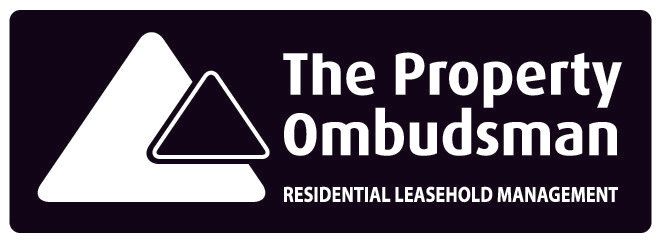Understanding Service Charge
When purchasing a property, no one wants any financial surprises. So, we’ve explained Service Charge in as much detail as possible below. Including how they are budgeted, paid for, and what to look out for when buying a leasehold property.
When buying a flat (or other leasehold property), it’s likely that you will need to pay a Service Charge. Whether you’re in a small block or a large residential development, Service Charge is necessary to ensure the general upkeep of the property and its communal areas/amenities. Service Charge is payable by the leaseholder to the freeholder, to cover costs such as maintenance, repair and insurance of the building and communal areas, as well as the employment of staff and management of the property.
What does Service Charge cover?
You can find details of what your Service Charge covers within the lease for your property. It will include everyday expenses to cover the general maintenance of a property, such as cleaning and gardening, as well as buildings insurance, salaries etc. You will also likely find a budget for cyclical expenses, like communal area decoration, risk assessments or lift servicing. As well as a reserve fund to cover long term expenditure.
How much can you expect to pay?
This is always the first question on any buyers’ lips, and the answer is dependent on a number of factors. Such as, the size of the property, the number of units, what amenities it has and the age of the building. For example, if you’re in a small block of 8 flats with little but a communal hallway and a flight of stairs or two, your Service Charge budget will be smaller, but split among fewer people. If you’re in a large residential block with lifts, communal gardens or leisure facilities, for example, your Service Charge will be considerably higher, but divided among a larger number of leaseholders.
Who decides the Service Charge budget and how?
Your designated Property Manager and Accounts Manager will work together to draft a reasonable annual Service Charge budget for the property. This must then be reviewed and approved by the Management Company Director(s) or Freeholder. They will take into consideration any unplanned maintenance expenses from the prior year, plus any planned works or upcoming risk assessments such as Electrical Testing, Fire Risk Assessments or Building Insurance Valuations.
The Service Charge budget will also need to cover the cost of any ongoing maintenance contracts, such as Gardening, Cleaning and Lift/Gate Maintenance, as well as communal gas and water (if applicable) and electric. Your Property Management team will look at the cost of utilities for the prior year to decide on a reasonable budget for this.
Reserve Funds explained
The Reserve Fund is often the most costly part of a Service Charge budget. This can come as a surprise, as people often mistake it for being a ‘just-in-case’ fund. However, the reserve fund is crucial, as it is there to cover long term expenditure. For example, it may be in the lease that the external painting is to be carried out every five years at the approximate cost of £10,000. In this case, the reserve fund would contain £2,000 a year so that the funds are available when the works are due. If you want to know what’s being covered in the reserve fund you can refer to your lease or ask your Property Manager.
Why is my Service Charge budget not the same each year?
Service charges are based on the expected expenditure for the coming year, which depends on several factors. Meaning your Service Charge may vary year-on-year. For example, risk assessments such as Asbestos Surveys or Building Insurance Valuations aren’t always carried out on annual basis; they can be every two, three or five years. So, a risk assessment may need to be factored into the budget one year but not the next (and vice versa).
As explained earlier, your Property Manager and Accounts Manager will look at the previous year’s outgoings for unplanned (emergency) maintenance. This covers any works that were unexpectedly required throughout the year; this could be anything from drainage issues to repair of a door entry system. If you’ve had a year where there have been a few unanticipated maintenance issues, your Property Manager will need to take this into consideration for the next year’s budget to make sure enough funds are available for any further unplanned works.
Service Charge apportionment
If you are curious as to how your Service Charge is apportioned, you should be able to find this information in your lease. In many cases, the Service Charge will be evenly distributed between leaseholders. However, where there are properties with different numbers of bedrooms, the apportionment could be variable. Either way, this information is usually presented within the lease as a percentage. If your lease is unclear about Service Charge apportionment, ask your solicitor to clarify.
How and when to pay your Service Charge
Service Charge demands are payable as per the lease. This might be monthly, quarterly, bi-annually or annually, and is usually due upfront to cover expenditure for the year ahead. Options for paying your Service Charge may differ between Managing Agents, but most should give you the option to pay either by BACS or over the phone upon receiving the Service Charge demand.
At Cleaver Property Management, we don’t take Direct Debit payments, but if you wish to set up a Standing Order you can discuss this with your Accounts Manager. If you’re not sure who your Accounts Manager is, simply give us a call on 0118 978 7182 and let us know your name and what property it’s regarding; a member of the team will make sure you get through to the right person.
Know where you stand
If you’re looking at purchasing a leasehold property, you can request a copy of the Service Charge budget before you buy, so that you can factor it into your finances. If you’re already a leaseholder of a property managed by us, you can ask your Property or Accounts Manager for the breakdown of your Service Charge budget, so that you know where your money is going. Please note that we cannot provide non-owners with a copy of a Lease for their potential purchase. However, the buyers’ solicitors can help to obtain this if needed.
Find out more
If you have a question about your Service Charge, please contact us on 0118 978 7182. If you would like to find out more about Cleaver Property Management, please take a look at our brochure or contact us using the form below.
Contact Us














